All about Jasmine!!
2/24/20246 min read

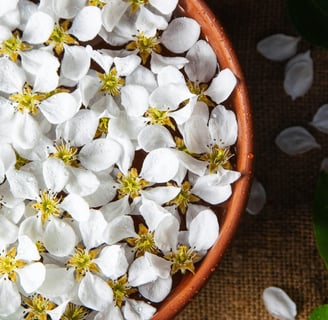
The Jasmine flower is a stunningly beautiful and highly fragrant flower that is native to tropical and subtropical regions. It is widely known for its delicate white petals and sweet, intoxicating scent that fills the air. Jasmine flowers are often used in various cultural and religious ceremonies, as well as in perfumes and essential oils. In many cultures, the Jasmine flower symbolizes purity, love, and beauty. Its captivating aroma is believed to have calming and therapeutic properties, making it a popular choice for aromatherapy. Additionally, Jasmine tea, made from the dried flowers, is enjoyed for its soothing and refreshing qualities. Whether admired for its elegant appearance or cherished for its delightful fragrance, the Jasmine flower continues to capture the hearts of people around the world.
Jasmine
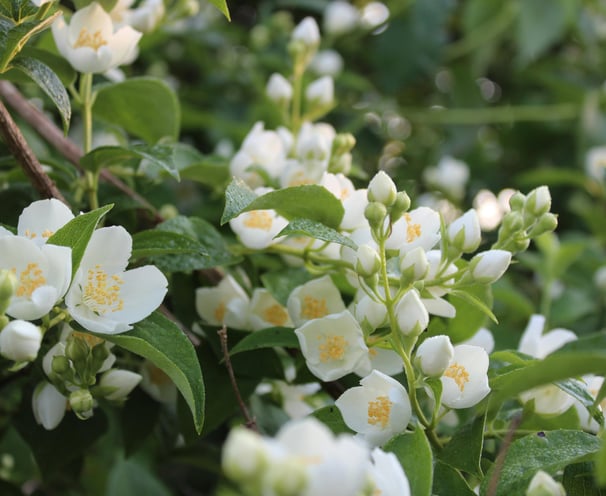

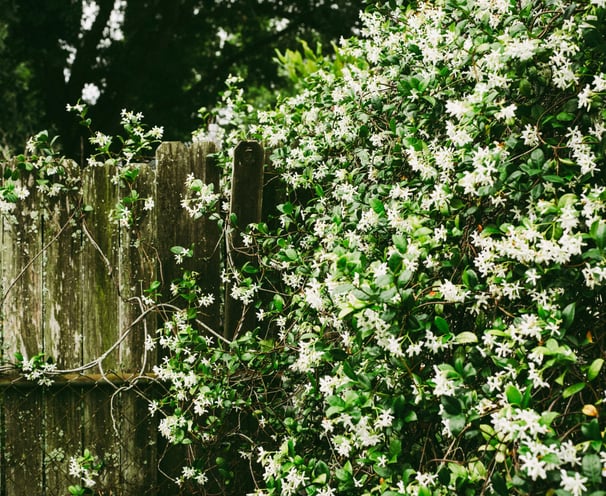

Soil Needs
The Jasmine flower, native to tropical and subtropical regions, boasts stunning beauty and an intoxicating fragrance. Widely used in cultural ceremonies and perfumes, it symbolizes purity, love, and beauty across many cultures. Its aroma is believed to have therapeutic properties, making it popular in aromatherapy and enjoyed in soothing Jasmine tea. For successful growth, Jasmine plants thrive in well-draining, nutrient-rich soil, ideally composed of a mix of loam, clay, and sand with a slightly acidic to neutral pH range of 6 to 7.5. Regular soil testing and amendments ensure optimal conditions for these elegant blooms.
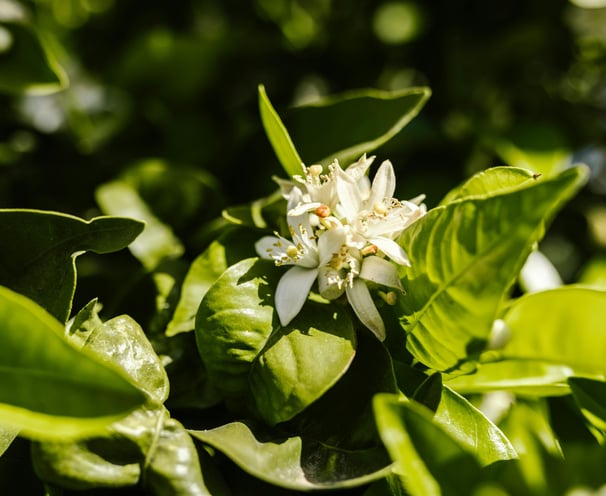

Water Needs
Jasmine plants generally require consistent moisture for healthy growth and flowering. While they don't like to be waterlogged, it's important to keep the soil evenly moist, especially during the growing season. Typically, jasmine plants benefit from deep watering whenever the top inch of soil feels dry to the touch. However, it's essential to avoid over-watering, as excessive moisture can lead to root rot and other issues. During periods of hot weather or when the plant is actively growing, you may need to water more frequently. In contrast, reduce watering during the dormant season or in cooler weather to prevent waterlogged conditions. Additionally, it's advisable to water at the base of the plant to avoid wetting the foliage excessively, which can increase the risk of fungal diseases. Adjust watering frequency based on environmental conditions and the specific needs of your jasmine plant to ensure optimal growth and flowering.
Fertilizer Needs
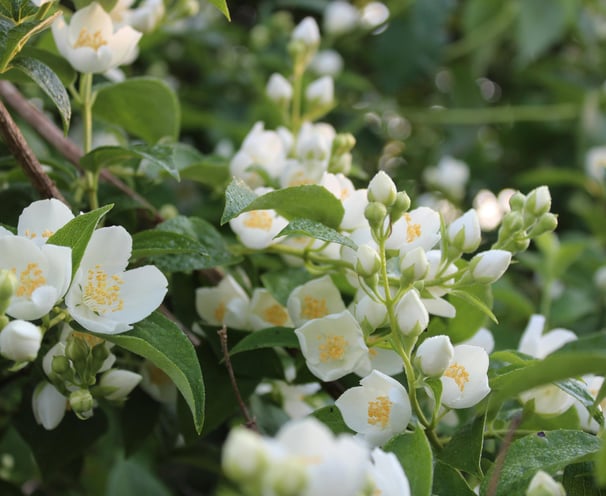

Jasmine plants thrive with regular fertilization during the growing season, typically in spring and summer, using a balanced, slow-release fertilizer with equal parts nitrogen, phosphorus, and potassium (N-P-K) every 4-6 weeks. Opt for a blend like 10-10-10 or 20-20-20 to promote healthy growth and abundant flowering. Ensure to follow the manufacturer's instructions to avoid overfeeding. After fertilizing, water the plant thoroughly to help nutrients reach the roots. During the dormant season in fall and winter, reduce or halt fertilization, resuming in spring as new growth emerges. By providing proper fertilization along with adequate watering and sunlight, your jasmine plant will flourish with vibrant foliage and fragrant blooms.
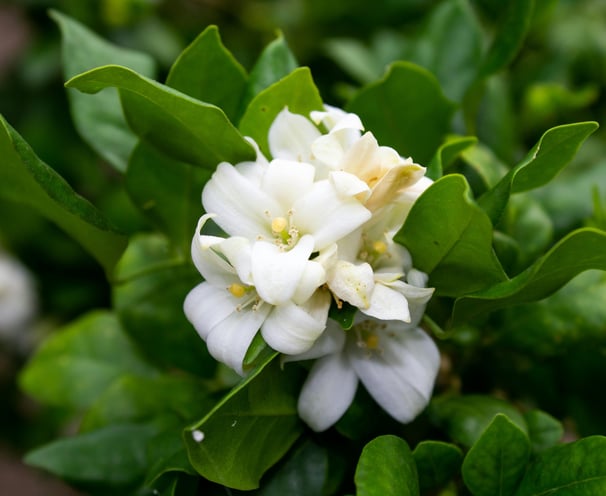

Jasmine Varieties
Jasmine offers a wide range of varieties, each presenting distinct traits in terms of fragrance, flower appearance, and growth characteristics. Some popular jasmine varieties include:
Arabian Jasmine (Jasminum sambac): Known for its intensely fragrant, white flowers.
Confederate Jasmine (Trachelospermum jasminoides): Features glossy green foliage and clusters of white, sweetly scented flowers.
Star Jasmine (Trachelospermum asiaticum): Exhibits dark green leaves and star-shaped, fragrant white flowers.
Winter Jasmine (Jasminum nudiflorum): Notable for its bright yellow, unscented flowers that bloom in winter.
Italian Jasmine (Jasminum humile): Offers yellow flowers and a more compact growth habit.
These are just a few examples of the diverse jasmine varieties available, each contributing its unique beauty and allure to gardens and landscapes.
Jasmine Plantation Process
Growing jasmine from stem cuttings is a relatively simple process that allows you to propagate new plants from an existing one. Here's a step-by-step guide: (Video)
Selecting the Cutting: Choose a healthy jasmine plant with vigorous growth. Select a stem that is relatively young (not too woody) and has a few sets of leaves. Ideally, choose a stem that is about 6 inches long.
Preparation: Using a sharp, clean pair of garden shears or scissors, cut the selected stem from the parent plant at a 45-degree angle. Make sure the cutting has at least two sets of leaves.
Removing Leaves: Remove the leaves from the lower half of the stem. This helps reduce moisture loss and encourages root growth.
Optional: Rooting Hormone: While not necessary, dipping the cut end of the stem in a rooting hormone powder can encourage quicker root development.
Planting the Cutting: Fill a small pot with well-draining potting mix. Moisten the soil lightly. Make a hole in the soil using a pencil or similar tool and insert the cutting into the hole, making sure the leaf nodes (where the leaves were removed) are buried under the soil.
Supporting the Cutting: If the cutting is tall or weak, you may need to provide support by inserting a small stake or using a plant clip.
Placement: Place the pot in a warm, bright location with indirect sunlight. Avoid placing it in direct sunlight, as this can cause the cutting to wilt.
Watering: Keep the soil consistently moist but not waterlogged. Mist the cutting regularly to maintain humidity around the leaves.
Root Development: Over the next few weeks, monitor the cutting for signs of new growth and root development. You can gently tug on the cutting after a few weeks to check for resistance, indicating root growth.
Transplanting: Once the cutting has developed a healthy root system, usually after 6-8 weeks, you can transplant it into a larger pot or directly into the garden.
By following these steps, you can successfully grow jasmine from stem cuttings and enjoy its beautiful flowers and fragrance. Remember to be patient, as rooting can take some time, and not all cuttings may be successful.
Growing jasmine from seeds can be a rewarding but somewhat challenging process compared to propagation from cuttings. Here's a step-by-step guide to growing jasmine from seeds: (Video)
Seed Collection: Collect mature seeds from a healthy jasmine plant. Allow the flowers to fade and dry out naturally on the plant, then harvest the seed pods (often called capsules) when they turn brown and start to split open. Remove the seeds from the pods.
Seed Preparation: Jasmine seeds have a hard seed coat that may inhibit germination. To enhance germination, scarify the seeds by gently rubbing them with sandpaper or nicking them with a knife. Soaking the seeds in warm water for 24 hours before planting can also help soften the seed coat and improve germination rates.
Soil Preparation: Prepare a well-draining potting mix. A mix of equal parts peat moss, perlite, and vermiculite works well. Fill small pots or seed trays with the potting mix, leaving some space at the top for watering.
Planting Seeds: Plant the scarified seeds about 1/4 inch deep in the potting mix. Space the seeds evenly and cover them lightly with soil. Water gently to moisten the soil.
Germination Conditions: Place the pots or trays in a warm, bright location with indirect sunlight. A temperature of around 70-80°F (21-27°C) is ideal for germination. You can cover the trays with a clear plastic lid or plastic wrap to maintain humidity, but make sure to remove it once the seeds germinate to prevent mold.
Watering: Keep the soil consistently moist but not waterlogged. Water from the bottom by placing the pots in a tray of water and allowing the soil to soak up the moisture. Avoid overhead watering, as this can dislodge the seeds or lead to fungal issues.
Transplanting: Once the seedlings have developed several sets of true leaves and are sturdy enough to handle, usually after 4-6 weeks, they can be transplanted into larger pots or directly into the garden. Harden off the seedlings by gradually exposing them to outdoor conditions before transplanting them.
Growing Conditions: Provide the seedlings with full sunlight or partial shade, depending on the jasmine species. Keep the soil consistently moist during the growing season, but allow it to dry out slightly between watering. Fertilize the plants regularly with a balanced fertilizer according to package instructions.
Training and Pruning: As the jasmine plants grow, train them onto a support structure such as a trellis or fence. Prune the plants as needed to maintain their desired shape and encourage bushy growth and abundant flowering.
Patience: Growing jasmine from seeds can take time, and not all seeds may germinate successfully. Be patient and continue to provide proper care to your seedlings as they grow.
With patience and proper care, you can grow beautiful jasmine plants from seeds and enjoy their fragrant flowers in your garden or home.
